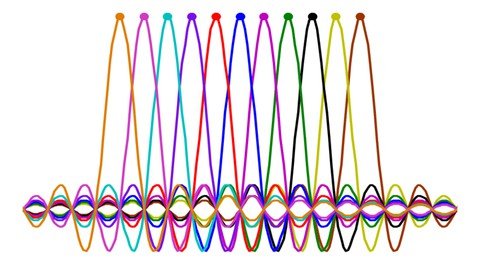
Orthogonal Frequency Division Multiplexing (Ofdm)
Last updated 7/2022
MP4 | Video: h264, 1280x720 | Audio: AAC, 44.1 KHz
Language: English | Size: 3.05 GB | Duration: 4h 45m
You will learn OFDM, which is a key transmission method used in 4G, 5G, WiFi, WiMax, WiGig, LiFi, ADSL, DVB, & Optics.
What you'll learn
OFDM Transmitter design
OFDM Receiver design
OFDM Pros. and Cons.
OFDM Simulations
OFDM PAPR Problem and Solution
OFDM OOBE Problem and Solution
Requirements
No requirement
Description
Due to its numerous advantages, orthogonal frequency division multiplexing (OFDM) has been the most dominantly used transmission waveform in the vast majority of the currently available standards, such as WiFi, WiMax, DVB, LTE, and NB-IoT. Moreover, it should not be a surprise that the OFDM waveform (with its new parametrized waveforms to meet the diverse requirements of different emerging applications and services) has successfully maintained its dominance in 5G systems. It has been adopted due to its desirable properties and features, including higher spectral efficiency, robustness to multipath with simple equalization in the frequency domain, easy integration with MIMO systems, and multi-user diversity where time and frequency resources are flexibly scheduled among users based on their requirements and channel conditions. Nonetheless, OFDM has several major issues and drawbacks, such as high peak-to-average power ratio (PAPR), spectral leakage, strict synchronization requirements, and frequency offset sensitivity. These issues have been heavily studied in the literature and many solutions were proposed to mitigate their side effects. In addition, it should be mentioned that in 5G new radio, different window-based time-domain filtering schemes have been proposed such as universal filtered OFDM (UF-OFDM or UFMC), filtered-OFDM (f-OFDM), time-domain windowed overlap-and-add (WOLA) based CP-OFDM, etc. Also, a flexible and effective frequency-domain filtering scheme, based on fast-convolution (FC), was proposed for filtered OFDM.In this course called OFDM for Beginners, we explain in detail the main concept of OFDM, which is a key transmission method used in 4G (LTE), 5G, WiFi (IEEE 802.11a, g, n, ac), WiMax (IEEE 802.16), WiGig, LiFi, DVB, VADSL, and Optics. In particular, we comprehensively explain how OFDM works at the transmitter and receiver sides in wireless communication networks and show you the mathematical genius behind its implementation using Inverse Fast Fourier Transform (IFFT) at the transmitter and FFT at the receiver.Then, we deeply explain its advantages (merits) and disadvantages (demerits) and why they exist. After that, we discuss technical solutions and methods for addressing the problems associated with OFDM-based transmission systems. Finally, we show you to simulate an OFDM system step by step using MATLAB and how to configure its parameter and debug if there are any errors in the code.======== About the Insturctor

